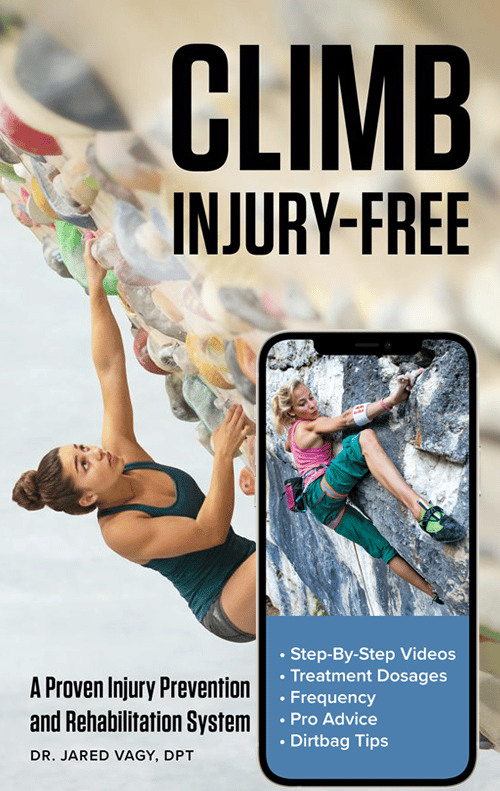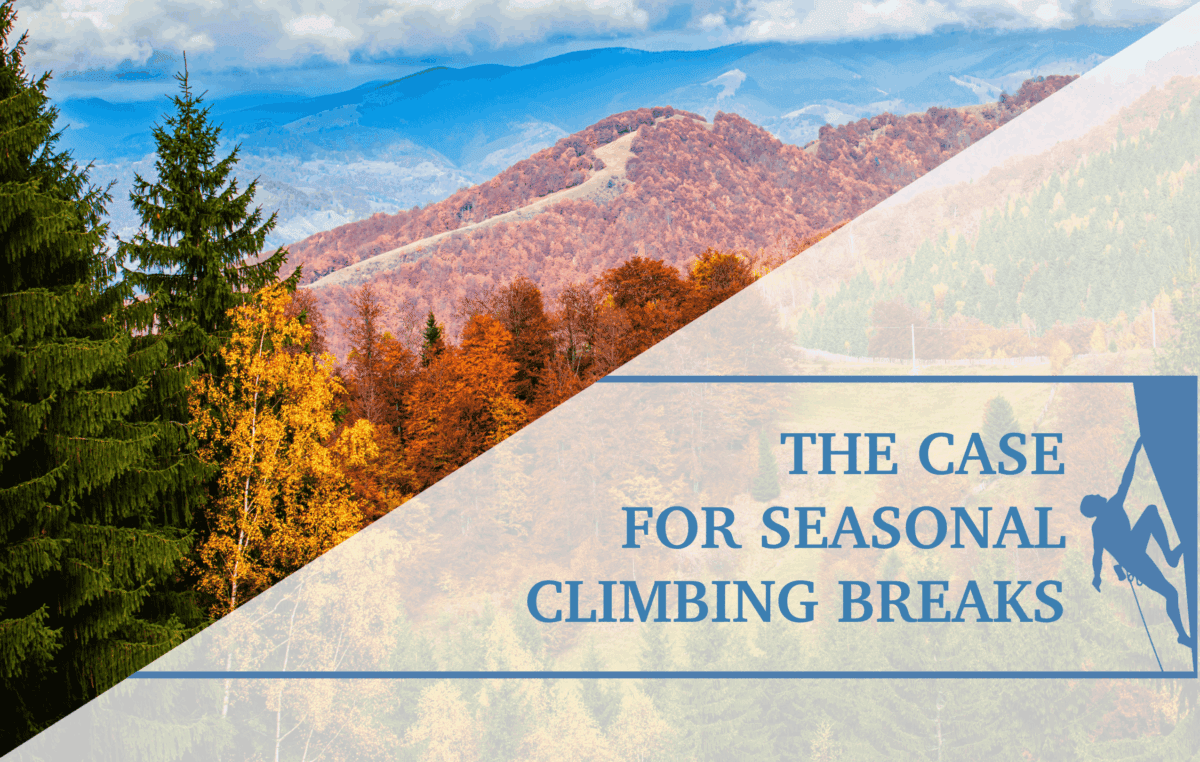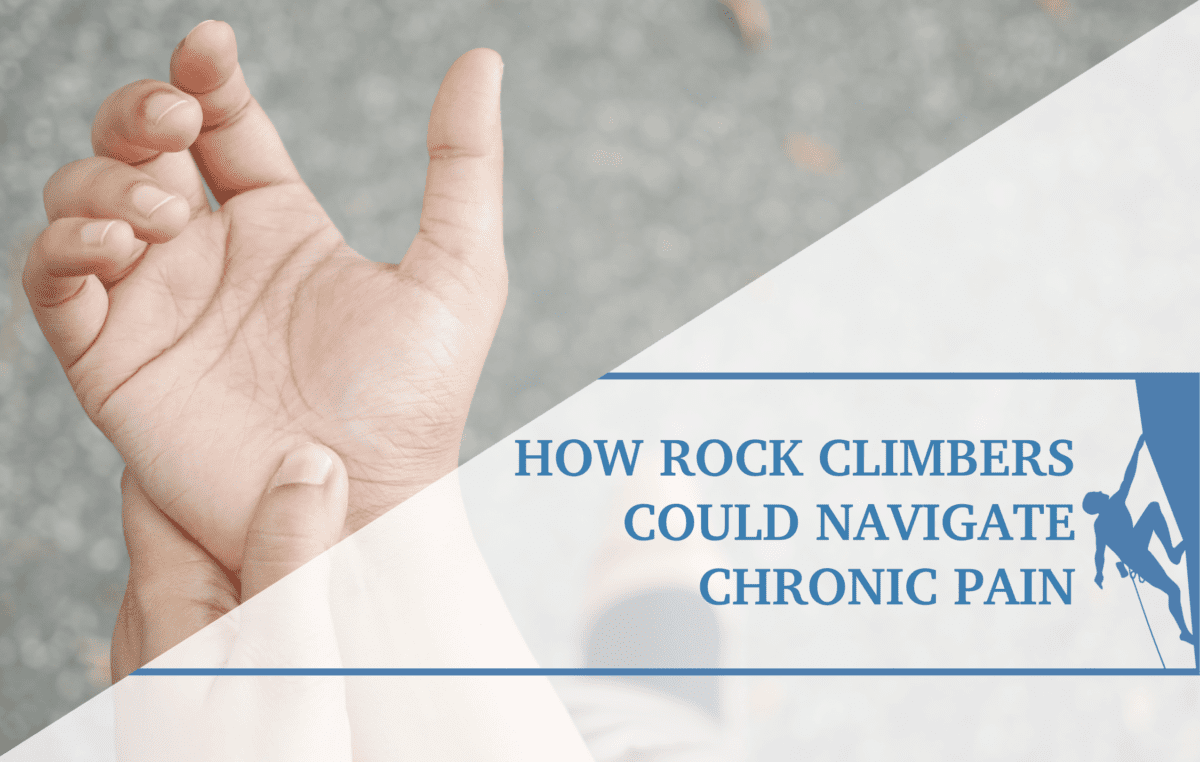Training for the Aging Climber
Most of us climb because we love it. Maybe it’s the peace that we get from being out in nature. Or the joy of using our bodies to do strenuous moves elegantly. Or the strong sense of belonging we get from being part of the climbing community. The fact is that for most of us, climbing fulfills some essential need of being human. It also gives us an outlet to pursue excellence. And while most climbers acknowledge that technique can improve throughout our lives, strength and power are often seen as finite resources that leave us in our thirties or forties. Fortunately for all of us, this view is fading into a thing of the past. Climbers are sending 5.14 into their 40s, 50s, and even 60s. Neil Gresham sent 5.14c at age 46. Johnny Dawes sent his first 5.14a at 54. Francesco Marin sent 5.14a at 60. These climbers and many more are dispelling the myth that the forties and beyond spell the end of hard climbing.
There is of course some truth to the view that climbing hard is—well—harder after your thirties. And while the general decline of certain factors is outside of our control—we all age and we all die—the rate of the decline is largely within our influence. The goal of this article is to give you a general understanding of the physiological processes of aging and how those processes might affect your climbing. I will also give you many strategies to help you slow down, counter, work around, or respect these changes. The goal is to enable climbers to push their limits longer than they thought possible and maintain a high level of function into older ages.
Strength
One of the most fundamental declines we see as we age is a loss of muscle mass and subsequently strength, generally known as sarcopenia. Atrophy of muscle fibers means the fibers we already have get smaller. This process generally starts in our 30s and accelerates after the age of 65.1 In addition to atrophy, we lose some of the muscle fibers we have.1 Factoring in the loss of muscle fibers and the reduction in size of the remaining muscle fibers, the total loss of strength for a given cross-sectional area of muscle is reduced by about 10% per decade starting between the ages of 40-50.2 There is good news for climbers though. Several studies have found that there are greater reductions of strength in the lower body than in the forearm and arm muscles.2
And the even better news is that long-term strength training can significantly reduce and, in some cases, reverse age-related loss of strength. The current guidelines for strength training recommend high-intensity (70-85% of 1 rep max), multi-joint exercises performed for 8-15 reps depending on intensity with 1-3 sets per exercise and resting for 45-90 seconds between sets.3
Power
In addition to strength, we also lose some of our power as we age. Power is a measure of how quickly we can contract our muscles. The loss of power is more complicated and involves changes to the nervous system as well as changes to the muscles themselves. The decline in power encountered over our lifespan is also more variable. The age-related decrease in power is not as precisely documented as strength. However, in the absence of power training, the decrease in power over the lifespan is greater than the decrease in strength.2 Luckily, many studies have shown that high-velocity power training can dramatically increase power in older populations. One study showed up to a 141% increase in leg power after 12-weeks of training, and most other studies showed increases of at least 15-25% in leg power over similar time frames.4
When gauging the expected declines in power over our lifespan, I find it helpful to look at the performance of master’s level athletes. This allows us to better separate the effects of age from the effects of decreased training or motivation in older ages. While not a direct equivalent, sprinting requires similar types of power as climbing. A major determinant of sprint speed is the ability to generate large amounts of force in a very short amount of time when the foot is in contact with the ground. In climbing, we must be able to generate large amounts of force quickly through the arms and legs to initiate dynamic movements and then again through the fingers to latch a hold once contact is made with the rock at the end of a dynamic movement.

Figure 1: 100-meter World Record times by Masters age group5
I find the graph above to be a helpful tool in visualizing the power drop that comes with older age while still training to maintain power. In my opinion, the results are very encouraging. Between the ages of 20 and 40 there is a decrease in sprint time of only 3.5% among male sprinters. Sprint times drop another 7-10% per decade thereafter until the 80s. In female sprinters, the declines are similar with a drop of 5.4% from the 20s to the mid-40s and a drop of 23% from the 20s to 60. My takeaway from the above information is twofold: significant power can be maintained into your 60s and 70s, and doing so requires regular power training that is high velocity with high motivation. There are countless resources out there for climbing-specific power training. In general though, the guidelines for training power call for 3-5 reps at 30-60% of your 1 rep max intensity for 3-6 sets and with a longer 3-5 minute rest between sets. The key to power training is that you must try to move as fast and explosively as you can.
Recovery and Injury
A particularly troubling factor of aging for many climbers is the increased susceptibility to injury and the decreased rate of recovery from those injuries. There are many factors playing a role in this change. One of them involves the decrease in satellite cells in muscle fibers with age. Satellite cells help to repair damaged muscle fibers and research has shown they can decrease by up to 50% over the course of the lifespan.1 Similarly, tendon fibers, which in healthy tendons are parallel, become more disorganized with age and injury.1 Injuries can be demoralizing for climbers of any age, but the older we get, the longer they tend to linger. My best recommendation for this is to rehab injuries as soon as possible and to do so following the advice of a professional, making sure to fully follow through on the rehab. A physical therapist who’s knowledgeable about climbing is a great resource here!
The next change with aging involves the recovery time between high intensity training sessions. Surprisingly to me this is one area that the research has had trouble documenting. Several studies actually found that older men experienced less exercise-induced muscle damage than younger men.6-9 Specifically muscle strength was less reduced following eccentric exercise in older men than in younger men in three studies and equally reduced in one study.6-9 It has however been a consistent finding that older women do exhibit higher levels of muscle damage than younger women.10,11 It’s currently unclear why older women have more muscle damage than older men. One hypothesis is a potentially protective effect of estrogen which is decreased in older women. There is some good news though! After the older women began participation in a resistance training program, their recovery time became comparable with sedentary younger women.
The finding of a lack of significant difference between old and young men contrasts with subjective reports of many aging male athletes that it takes them longer to recover between bouts of intense exercise. This could be because the studies are not measuring all the relevant factors that allow an athlete to feel recovered. Most studies measure maximal voluntary contraction (max force output) and circulating levels of biomarkers indicating muscle damage before and after the damaging exercise. Not many have measured speed of muscle recruitment following an intense bout of exercise, which would likely play a large role in climbing performance.
The subjective reports of an increase in recovery time vary significantly from climber to climber, with some reporting a change in their late 30s and some reporting a change in their late 40s. In his Lattice Training Podcast, Tom Randall shares many strategies to employ if you do start to notice delays in your recovery. It should be noted that all the following strategies can also play an important role in reducing the risk of injury. The first is to avoid doubling up on full training sessions in the same day. Instead, try parceling out training sessions into smaller blocks throughout the day or week. For example, you might perform a hangboarding session in the morning, an endurance climbing session in the evening, and some mobility exercises before bed. Another useful strategy is to plan try-hard days strategically to maximize strength and power. Look at your week and figure out which days you are likely to be more rested and less stressed. Plan your hardest sessions then.12
Another area to focus on maximizing is your warm-up. Warming up is an essential part of injury prevention and becomes more important as we age. Although the length of your warm-up may need to increase with age, it shouldn’t go longer than 30 minutes. Robyn Erbesfield Raboutou, 4-time Climbing World Cup Champion and former head coach of the USA Climbing Youth Team, advises against warming up for too long as it can cut into the energy you have to devote to training. At the age of 60, she can be fully warmed up in 20 minutes most of the time.13 The folks over at Lattice Training have an efficient warm-up that hits the whole body and is done in 15 minutes.
Another strategy is to use deload weeks and to change the work to rest ratio of your training plan. A deload week is when you cut back the time or intensity of your training for a week to allow your body to more fully recover from the stress of the previous weeks of hard training. Deload weeks are pivotal to climbing training to prevent training stress from building up and causing overuse or acute injuries. Tom Randall reports that most of the Lattice clients use a 3:1 ratio when it comes to hard training weeks to deload weeks. This means 3 weeks of hard training would be followed by one week of training at around 50% intensity or volume. For aging climbers who have noticed a decline in recovery, he recommends trying a 2:1 ratio—2 weeks of hard training followed by 1 deload week. If a climber finds that this change increases the quality of their training, then stick with it.12
The final strategy to help with recovery and injury prevention should come as no surprise, but it does bear repeating. As we age, it becomes even more critical to focus on reducing stress to healthy levels and increasing sleep. Both factors have been found to play a strong role in recovering from intense exercise as well as recovering from injuries. Both factors also often go hand in hand. A reduction in stress can allow for better sleep and vice versa. Meditation and spending more time in nature have both been found to have numerous positive impacts on overall health and on reducing stress.14,15 Sleep can be a tricky one since so many factors affect it. If you’re getting enough sleep every night, congratulations! You are in the minority. If you aren’t, try using an app or consulting with a sleep specialist or a therapist who focuses on sleep issues.
Takeaway
One of the things that makes climbing such a beautiful lifelong sport is that technique plays such a vital role in success. Climbing well means reducing the amount of strength and power needed to send. With that said, strength and power are essential to sending hard routes and pushing our limits. To recap, strength training involves intensities of 70-85% of your 1 rep max for 8-15 reps and 1-3 sets, resting 45-90 seconds in between sets. While power involves 3-5 reps at 30-60% of your 1 rep max focusing on fast, explosive movements for 3-6 sets with 3-5 minutes of rest between sets. Key factors for improving recovery as you age are spreading training sessions throughout the day and week, planning try-hard days when you’ll be the most rested, always performing an extensive warm-up, incorporating deload weeks into your training program, and reducing stress while optimizing sleep. The good news is that a consistent and well-rounded training program can help us maintain adequate strength, power, and resilience to injury into our 60s, 70s, and beyond.
Author Bio
Austin Reynolds is a physical therapy student at the University of Tennessee, Chattanooga and love all things climbing.
References
- Boros K, Freemont T. Physiology of ageing of the musculoskeletal system. Best practice & research Clinical rheumatology. 2017;31(2):203-217.
- Hunter SK, Pereira HM, Keenan KG. The aging neuromuscular system and motor performance. J Appl Physiol (1985). Oct 1 2016;121(4):982-995. doi:10.1152/japplphysiol.00475.2016
- Law TD, Clark LA, Clark BC. Resistance Exercise to Prevent and Manage Sarcopenia and Dynapenia. Annu Rev Gerontol Geriatr. 2016;36(1):205-228. doi:10.1891/0198-8794.36.205
- Reid KF, Fielding RA. Skeletal Muscle Power: A Critical Determinant of Physical Functioning in Older Adults. Exercise and Sport Sciences Reviews. 2012;40(1):4-12. doi:10.1097/JES.0b013e31823b5f13
- Pickering C, Hicks D, Kiely J. Why Are Masters Sprinters Slower Than Their Younger Counterparts? Physiological, Biomechanical, and Motor Control Related Implications for Training Program Design. J Aging Phys Act. Aug 1 2021;29(4):708-719. doi:10.1123/japa.2020-0302
- Lavender AP, Nosaka K. Fluctuations of isometric force after eccentric exercise of the elbow flexors of young, middle-aged, and old men. Eur J Appl Physiol. May 2007;100(2):161-7. doi:10.1007/s00421-007-0418-7
- Lavender AP, Nosaka K. Comparison between old and young men for changes in makers of muscle damage following voluntary eccentric exercise of the elbow flexors. Appl Physiol Nutr Metab. Jun 2006;31(3):218-25. doi:10.1139/h05-028
- Lavender AP, Nosaka K. Responses of old men to repeated bouts of eccentric exercise of the elbow flexors in comparison with young men. European Journal of Applied Physiology. 2006/07/01 2006;97(5):619-626. doi:10.1007/s00421-006-0224-7
- Nikolaidis MG. The Effects of Resistance Exercise on Muscle Damage, Position Sense, and Blood Redox Status in Young and Elderly Individuals. Geriatrics. 2017;2(3):20.
- Ploutz-Snyder LL, Giamis EL, Formikell M, Rosenbaum AE. Resistance Training Reduces Susceptibility to Eccentric Exercise-Induced Muscle Dysfunction in Older Women. The Journals of Gerontology: Series A. 2001;56(9):B384-B390. doi:10.1093/gerona/56.9.B384
- Clarkson PM, Dedrick ME. Exercise-induced Muscle Damage, Repair, and Adaptation in Old and Young Subjects. Journal of Gerontology. 1988;43(4):M91-M96. doi:10.1093/geronj/43.4.M91
- Randall T. Lattice Training Podcast. Peak Performance for Climbers in Their 40s and Beyond. Accessed January 4, 2024. https://latticetraining.com/2023/03/11/peak-performance-for-climbers-in-their-40s-and-beyond-insights-from-pro-athlete-and-coach-tom-randall/
- Vagy J. Preparation is Everything – Robyn Erbesfield Raboutou. The Climbing Doctor Podcast. Accessed January 16, 2024. https://www.youtube.com/watch?v=Nqfk_lGravo&t=85s
- Haluza D, Schönbauer R, Cervinka R. Green perspectives for public health: a narrative review on the physiological effects of experiencing outdoor nature. Int J Environ Res Public Health. May 19 2014;11(5):5445-61. doi:10.3390/ijerph110505445
- Goyal M, Singh S, Sibinga EM, et al. Meditation programs for psychological stress and well-being: a systematic review and meta-analysis. JAMA Intern Med. Mar 2014;174(3):357-68. doi:10.1001/jamainternmed.2013.13018
- Disclaimer – The content here is designed for information & education purposes only and the content is not intended for medical advice.




